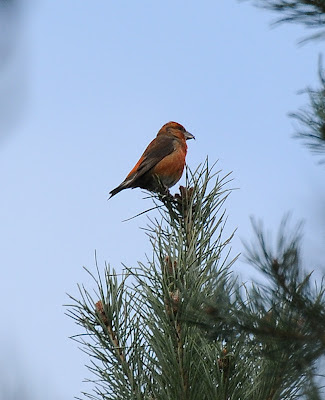 |
| (c) S. Allen |
Simon Allen of the Gower Bird Hospital wrote: ‘In July 2011
we were called out to a Red Kite near Gowerton, reported as being caught up in
a tree by its wing tags. When we arrived the bird had fallen from the tree and
was moribund. It was a young male, one
of two kites hatched on Gower peninsula that year. Examination of the bird revealed
no signs of trauma around the patagia of the wings, so entanglement was
unlikely. It appeared in good physical condition weighing in at 849g, so was sent
off for toxicology tests under the Wildlife Incident Investigation Scheme (WIIS).
The results stated the cause of death as a ruptured liver due to trauma.
Background testing for rodenticides (anticoagulants) demonstrated that the bird
had three second generation anticoagulant rodenticides (SGARs) in its liver, these
being:
Difenacoum (0.16mg/kg):
The first second generation anticoagulant to be
introduced in 1974.
Bromadiolone
(0.016mg/kg): A second generation anticoagulant. One important attribute
appears to be that it does not markedly reduce the palatability of baits in
contrast to other anticoagulants.
Brodifacoum
(0.002mg/kg): One of the most potent
second generation anticoagulants introduced commercially in 1979. A lethal dose
can be ingested after one feed. This product is licensed for indoor use only.
Rodents have developed resistance to the first generation of
anticoagulant rodenticides (FGARs) such as warfarin, so new chemicals have been
developed. Both FGARs and SGARs work in
the same way, by preventing blood from clotting and thereby inducing haemorrhaging,
but their toxicity is very different. FGARs are described as short-acting, they
stay in the body for a relatively short time and often require multiple doses
to exert their toxic effects. SGARs only require a single dose to cause
clinical signs of haemorrhage and they stay in the body much longer than FGARs,
increasing the chance of secondary poisoning. Most cases of toxicosis of
non-target species involve SGARs
Although cause of death of the kite was recorded as trauma,
the report suggested that the residual rodenticides would have exacerbated the
injury where otherwise the bird may have recovered (although the bird may have
been already weakened by the poison which resulted in the fall and consequent
trauma).
Rodenticides may also have a non-lethal effect on a
population, affecting their ability to hunt and breed successfully. A study on
the effects of rodenticides on a great bustard population in Spain demonstrated
a link to increased pathogen and parasite burdens in birds exposed to
rodenticides.
It’s not just the top predators such as raptors and
mustelids that are being affected. Gower Bird Hospital supplied 20 hedgehogs
that had died to a survey for anticoagulants as part of a PhD study by Claire
V. Dowding at Bristol University. 85% of the 20 hedgehogs had rodenticide
residues in their livers, 15% had the same profile as the red kite i.e. three
residual SGARs in their livers. The hedgehogs came from a wide geographical
area across South West Wales.
Just like the link between insecticides and parasitosis in bees, the effects of rodenticides on avian
and mammal health and fecundity are real and happening now outside your back
door.’






.jpg)
+21Fed12.jpg)
.jpg)
+19feb12+(1a).jpg)
+19feb12+(5a).jpg)
+19feb12+(2a).jpg)

.jpg)
.jpg)





.jpg)
.jpg)